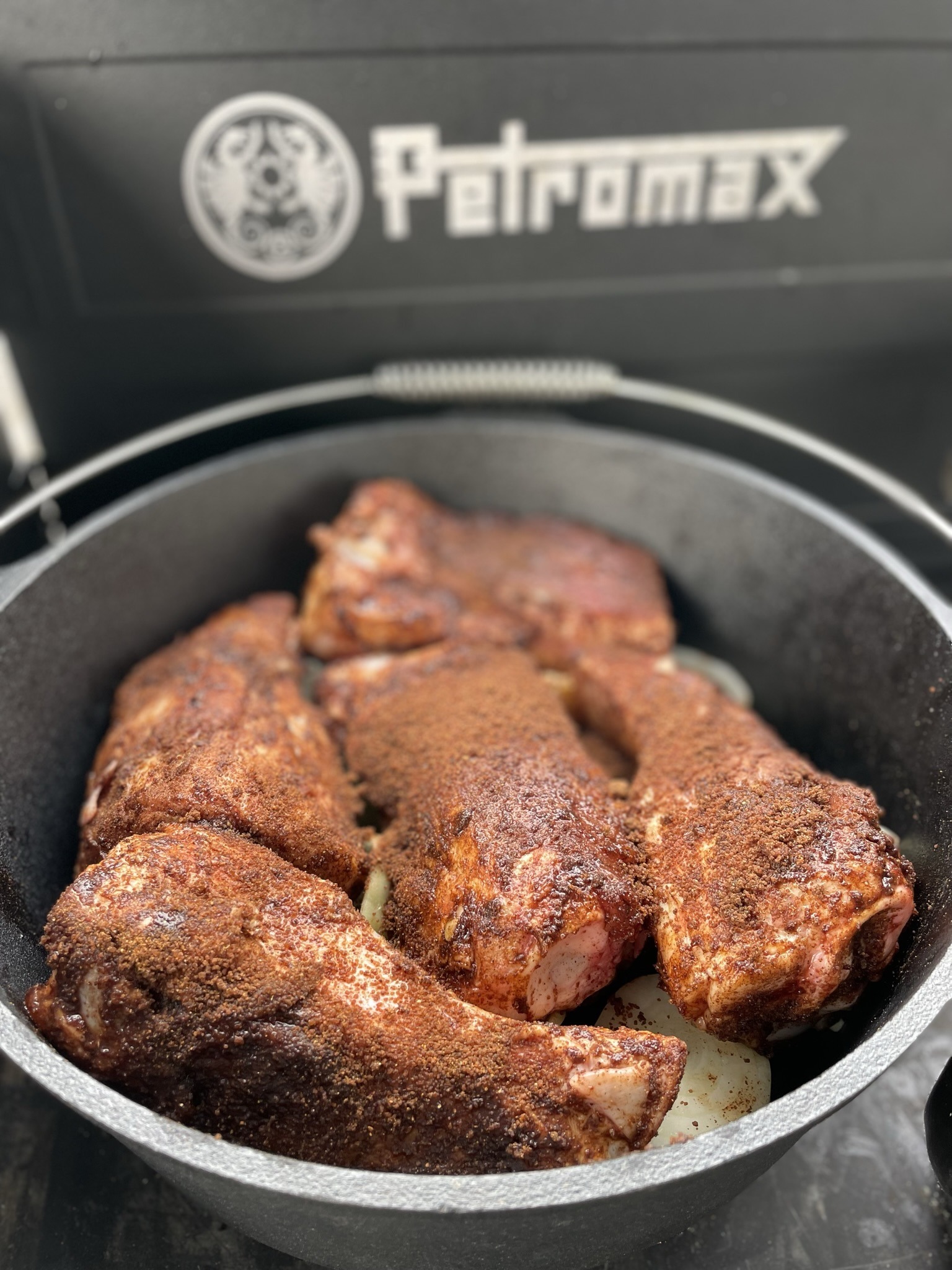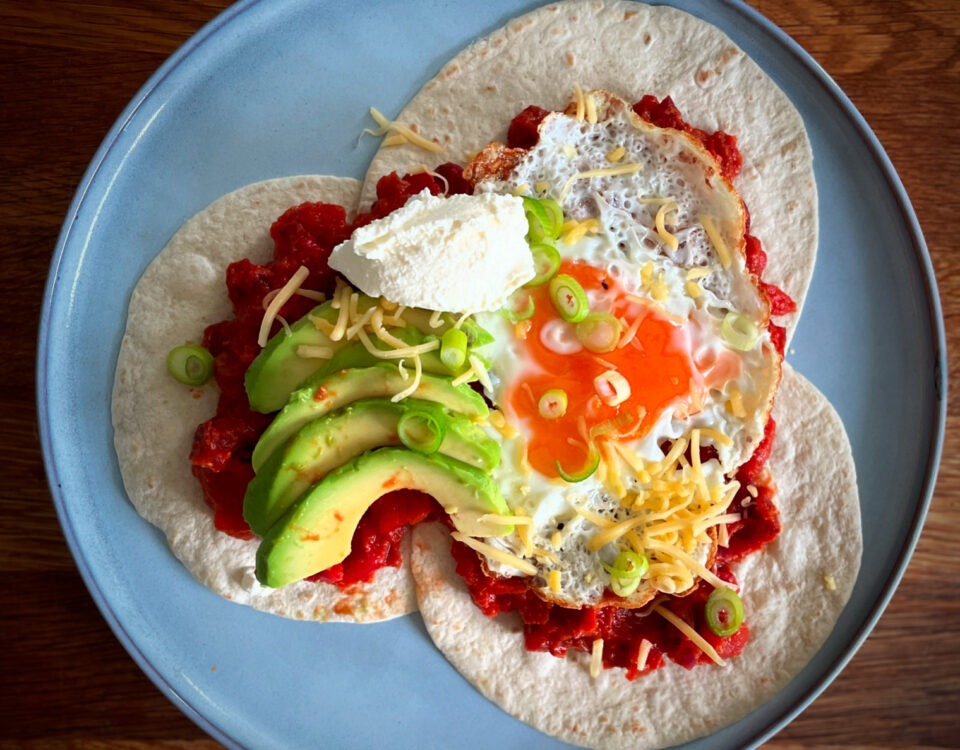
Hangersteak – asian style
November 22, 2021
Braised ham hocks in a Dutch Oven
May 23, 2022I have a guilty pleasure, and that’s indulging in a truly luxurious sandwich whenever possible. And if available, one with pastrami on it. Because when made well, such a sandwich is ridiculously delicious. That recently prompted me to try making it myself because, as with many dishes, homemade is often tastier than store-bought.
Pastrami is made from beef, specifically brisket. Yes, you can’t buy it at the regular supermarket. As you might have read in my other articles, I’m not a fan of buying meat at the supermarket. Buy it from your butcher. That way, you know what you’re getting, and a good butcher often offers far better quality than the supermarket. (And a good butcher is honest and transparent about the meat they sell.)
The process of making pastrami involves brining. It’s a technique where meat is immersed in a salt solution. This method is ancient and is used more frequently than you might think. Many meat products are smoked or brined. And brining can be done ‘dry,’ where the meat is buried in a large container under a significant amount of salt for a specific period. The other variant is ‘wet’ brining, where the meat is submerged in a generous amount of water with a brine solution for a certain period. After brining, rinse the meat under the tap. The brine bath is meant to tenderize the meat. Brined meat doesn’t dry out as quickly. It’s important to know that brining your meat doesn’t mean it will become extremely salty. The salt minimally penetrates the meat itself.
Ingredients
- Materials
Vacuum sealer
BBQ / Smoker
Smoking wood chips
Brine injector
Strainer
- Meat
Brisket or beef neck
- Brine mix
90g nitrite curing salt OR regular salt
25g brown sugar
¼ onion
2 cloves of garlic
25g of the following pickling spice mix
- Pickling spice mix
10 teaspoon coriander seeds
2 teaspoon yellow mustard seeds
1.5 teaspoon whole black peppercorns
1 teaspoon juniper berries
1 teaspoon fennel seeds
1 teaspoon dill seeds
½ teaspoon fresh sage
½ teaspoon fresh or dried tarragon
1 teaspoon whole allspice berries
4 dried or fresh bay leaves
3 cloves
- Ingredients for spice rub per kilogram of meat
15g black peppercorns
12.5g coriander seeds
½ tablespoon brown sugar
½ tablespoon paprika powder
¼ tablespoon ginger powder
Directions
- For 1 kilogram of meat, prepare 1 liter of brine. Heat a quarter of the water (250ml) on the stove and add all the ingredients for the brine. Warm it until all the salt and sugar are completely dissolved. Remove it from the heat and add the remaining water to cool it down. It’s crucial that the fat content of your brisket doesn’t exceed 0.5cm. Ask your butcher to trim this if you’re uncertain about doing it yourself.
- Pour the cooled brine through a sieve into another bowl to remove the liquid from all the spices. Use your brine injection syringe and inject the meat every 3cm. Strain the cooled brine and inject your meat using the strained brine, aiming for about 20% brine injection, which is around 200ml per kilogram of meat. Concentrate more on the thickest parts of the meat to ensure they receive enough brine infusion.
- Place the meat in a bucket, ziplock bag, or vacuum-sealed bag, and pour the remaining brine over it. Let it sit in the fridge for 8 to 12 days, turning the meat over daily.
- After 8 days, begin by creating the spice rub for the pastrami. Start by coarsely crushing or grinding the mustard seed, coriander, and peppercorns in a mortar and pestle. Then add the rest of the ingredients. The mixture should resemble coarse sand.
After the brining process, remove the meat from the ziplock bag, bucket, or vacuum-sealed bag, and rinse it thoroughly. Pat it dry with paper towels and place it back into a ziplock bag or vacuum-sealed bag, removing as much air as possible. Let the spices marinate with the meat in the refrigerator for another day. - The next day, prepare the BBQ for a low and slow indirect cook, maintaining a temperature of 110°C
- Unwrap the meat, sprinkle any additional spices if needed, and place it on the BBQ. Smoke the meat until it reaches an internal temperature of 63°C
- Allow it to cool down, vacuum seal the meat, and if needed, let it sit in the refrigerator for an additional 2 days. Slice it against the grain to your desired thickness!



